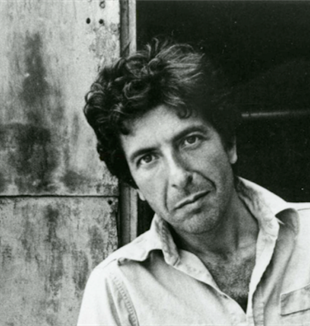
A Unique Lens
The friends that organized the Leonard Cohen exhibit at the 2024 New York Encounter share their judgment on the work.The Leonard Cohen exhibit that we prepared for the Encounter bore many unexpected fruits. A few days after the Encounter, our team had a conversation that made this clear. Here is a recounting of our conversation:
My wife and I, who both worked on this exhibit, had been experiencing a great difficulty trying to complete work and be creative since the death of our son, and doing this project set us into motion again. Old skills came back, and our interest in art re-emerged. Partly to thank for this was Cohen’s own dedication to his craft, which we encountered up-close in our preparations. He spent his whole life diligently working away at his poetry, sometimes spending 40 years on a poem or writing 80 alternate verses before choosing four for “Hallelujah”. He clearly intuited that the act of artistic creation was something with purpose, and at times reminded us that creation is always a form of dialogue with God.
Similar to our experience, another member of our team said that she was “grateful to give” a small amount of her time and energy to the exhibit. During a rough patch, she found it the case that going all the way to New York – spending the money, singing three songs at our evening event – and then going home, was a small way to say what she was made for and Who she belongs to. She said that she was happy to discover that she had something to give. This sentiment was shared by all of us in different ways.
When we set out to do the exhibit, our greatest desire was that it open up new conversations. We wanted this more than a perfect exhibit, and we got it. One member of our team was moved by how many young people hadn’t heard of Cohen but still took an interest; he saw them change during his tours. Another remembered watching someone return to the exhibit for a second visit. We even had interesting conversations with people who expressed their distaste for Cohen or lack of interest in him. Cohen proved to be a valuable starting point for going deeper, a true sign that he was a good topic for us to work on.
We were struck once again in our conversation by certain things that really impressed us about Cohen and that leapt out through the experience of making the exhibit public. For example, the way that Cohen never reduced the extent and brutality of suffering nor the inexhaustible mystery of beauty. We found certain corners of Cohen’s work to be surprisingly relevant to our lives, problems, and interests.
It became more clear that the Encounter’s strength is not in its perfection but in the unique lens it offers to look at culture. I am pursuing a career in academia, and I was very aware when making the exhibit that it wouldn’t get me ahead in my academic career, nor would it be perfect work. But I found it really interesting to engage questions of culture in the space created by the Encounter – in a fully human space – with a full proposal for the human person that for once, is not partial. So many of the greatest cultural spaces in our world do not carry with them any kind of coherent proposal for one’s humanity. They are full of the power dynamics that one finds in any other corner of high-achieving society. The Encounter is different, and that is its greatest strength.
After our exhibit team conversation, I went to bed happy and energized, not because I had achieved what I set out to achieve or done my best work, but because I felt new life alive in me; a new, luminous gaze on my reality open and alive, which is the sign of an encounter with God.
Sean, Montreal, Canada